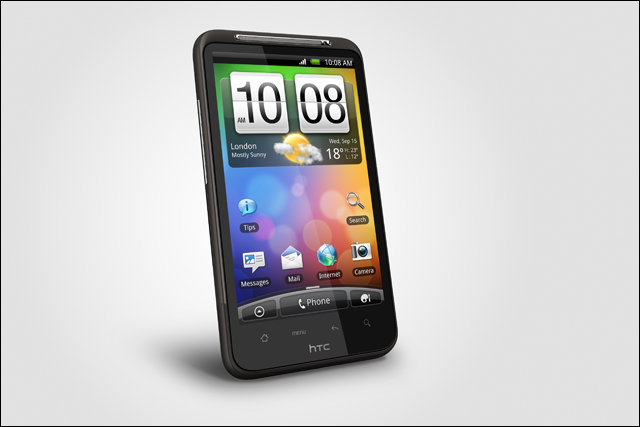news Telstra has pledged to remove the amount of self-branded applications and links it is embedding in its line-up of Android smartphones, in the wake of significant pressure from users angry about having their devices filled up with software commonly referred to as “bloatware”.
In an open letter published on Telstra’s support forums in July, one of the telco’s customers went into a great amount of detail about the problem. The forum thread attracted a throng of customers agreeing with the original poster. Many of Telstra’s mobile apps are aimed at encouraging customers to utilise value-added services such as Foxtel, which is only available to Telstra customers.
“I understand that Telstra is in the business of selling communications products and services, and I support that as a long-time and loyal customer,” they wrote. “I also understand that you wish to install branding and “added value” in your mobile phone products, to assist customers in discovering and using the other services that Telstra offers.”
“What I don’t understand is why you feel the need to afflict customers with useless and annoying modifications which permanently alter the user’s experience. Such modifications invariably reduce the value of the device to the user, resulting in customers left with a sour taste in their mouths … Telstra is knowingly and deliberately making the phones they sell worse than they would have otherwise been, in an attempt to make a few more bucks out of every user.”
The customer outlined a number of problems which Telstra Android phones suffered, such as “the vast number of pointless links, apps and shortcuts” they said Telstra tended to install on its phones, the inability to remove such additions, problems accessing applications over Wi-Fi connections, a failure to release operating system updates in a timely fashion, and even how fast Telstra is bringing new handsets to market.
“Telstra was one of the last carriers in the western world to launch the HTC Sensation, and will be similarly tardy in releasing the Samsung Galaxy S2,” they wrote. “… getting phones to market more quickly is much easier without the myriad of complex customisations and tweaks Telstra has traditionally implemented.”
In an extensive response to the post, Telstra’s general manager of device experience, David Powell, said the telco was taking the issue seriously. Telstra, he said, was progressively implementing a “revised device experience strategy”, that would allow the carrier to continue providing easy access to its services, while also recognising the desires of customers for greater control over their handsets. The new strategy had kicked off with Telstra’s release of Windows Phone 7 handsets in late 2010.
Some of the changes which Telstra was making, Powell wrote, included:
- A reduced amount of pre-loaded applications on devices, with much functionality being centralised in the new TelstraOne app
- The ability to remove Telstra apps
- Making Telstra applications available through the Android Market if users wanted to install them
- Removing web links in the Android application tray. “We agree that if it isn’t an app, it doesn’t belong in the application tray,” wrote Powell.
- The ability for uses to fully customise their Android homescreen (some Telstra apps will remain on the homescreen, but the number of apps have been reduced, and customers will be able to remove them)
- Cutting the memory footprint of the TelstraOne app to free up storage space
“In addition to new devices, all Android device OS updates from Telstra going forward will feature these capabilities and features giving our customers much greater control over their devices and removing the ‘bloatware’,” wrote Powell. The executive has also continued to take follow-up questions and comments from Telstra customers on the matter.
In Australia, it is common for the major carriers to install their own software on mobile phones — especially smartphones — before sale. One of the only notable major handset lines to ship without any custom software loaded at all is Apple’s iPhone line. The phenomenon is also common to the PC, laptop and tablet markets.
opinion/analysis
Great to see Telstra finally recognising the bloatware problem and doing something about it. The telco in general has taken a much more responsive attitude to its customers over the past several years and that’s something we applaud.
Image credit: HTC


The 3G data meter should be mandatory though (which Telstra are doing with TelstraOne).
Not being able to access the m.bigpond.com is a pain but I’m not sure how they’d do single signon over the internet.
Personally, I don’t think anything should be “mandatory”, although I like having the 3G data meter myself.
It should just be available on the market to download and/or be able to be uninstalled from the phone
+1
Now they just need to working on getting the updates out quicker! I’m still waiting the Gingerbread update to the Atrix.
Serious? Gingerbread and the Atrix were both out ages ago … what gives?
The picture in the article is of a phone Telstra doesn’t sell :p
Heh to tell you the truth I did that deliberately wondering whether anyone would notice ;) You are correct; it’s the HTC Desire HD (exclusively sold by Vodafone) :D
Its a slow phone without bloatware.
This is good, but the easiest way to get rid of bloatware is to just flash them with a custom ROM, as any self respecting geek would do.
Comments are closed.